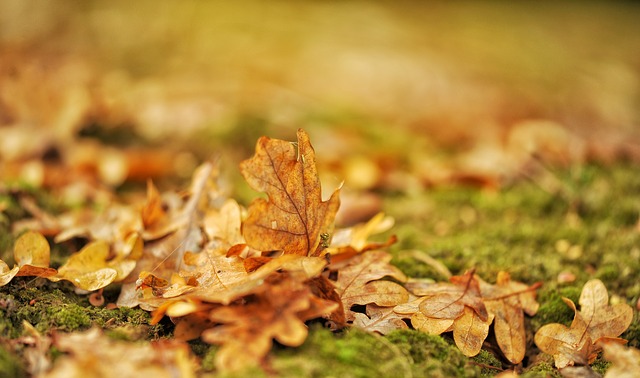FOR IMMEDIATE RELEASE
URBANA, Ill. – Are you ready to change the way you clean up your perennial garden in the fall? Kelly Allsup, a University of Illinois Extension horticulture educator, says changing just a few garden habits can make a huge difference to butterflies, moths, bees, and other beneficial insects that overwinter in the Illinois landscape.
Allsup says the first habit to break is removing all the fallen leaves from the landscape.
“Leaves provide insulation for overwintering forms of butterflies and moths,” she says. “Also, for some species, it is extremely difficult to distinguish between a leaf and a chrysalis. Black swallowtail butterflies who dine on your dill, fennel, parsley, or carrots overwinter as a brown chrysalis that mimics an old fallen leaf. Without allowing this caterpillar to make it to adulthood, we would be without these large, shiny, black iridescent butterflies fluttering from flower to flower.”
However, allowing leaves to accumulate directly on the grass will kill it. Allsup recommends cleaning up leaves that fall on lawns and leaving any that fall in the garden or other, more rustic landscape features. “If you have experienced disease or insect infestations, though, clean-up may be necessary to reduce future problems.”
The second bad habit? Cutting back perennial forbs in the fall.
“These plants are still hosting life, despite the browning of leaves from the frost,” Allsup says. Silvery checkerspot butterflies overwinter as caterpillars in brown skins at the base of their host plants. Black-eyed Susans, coneflower, and sunflower are host plants for these smaller orange butterflies covered in black lines, patches, and spots.
In addition to butterflies, carpenter and other bees nest in the pith of stems. The bees are further encouraged if gardeners cut the tips of the stems, making it easier to crawl inside. Allsup says it is best to not cut back these dead stems until late spring, if at all (foliage will grow up around the stems). “When you do so, cut back to 12-18 inches and cut the snipped foliage into large chunks and spread around the garden to prevent tossing your nesting bees into the compost pile.”
The third bad habit is trimming shrubs.
To begin with, Allsup says, fall is usually not the time to prune shrubs. And large shrubs like willow could host overwintering red-spotted purple or viceroy caterpillars. These caterpillars overwinter in a hibernaculum, a protective cone that looks like a leaf.
Fourth habit to break: Removing downed trees and logs.
When possible, keep downed trees in the landscape. If it’s not possible to leave the entire tree, keep a few logs for bees and other insects to overwinter or nest in.
Bad habit number five? Eradicating weeds from the landscape.
Some weeds are actually very beneficial to butterflies and bees. For example, buckeye butterfly larvae feed upon the common plantain. Early-blooming weeds like violets and dandelions are crucial for bees in the early spring before trees flower. And blue violets are the food of the great spangled fritillary butterfly.
Caterpillars eat your plants, and butterflies and bees visit the flowers in your garden. Allsup says, “Be sure to extend that invitation by altering some of your fall garden practices.”
News source: Kelly Allsup, 309-663-8306, kallup@illinois.edu
